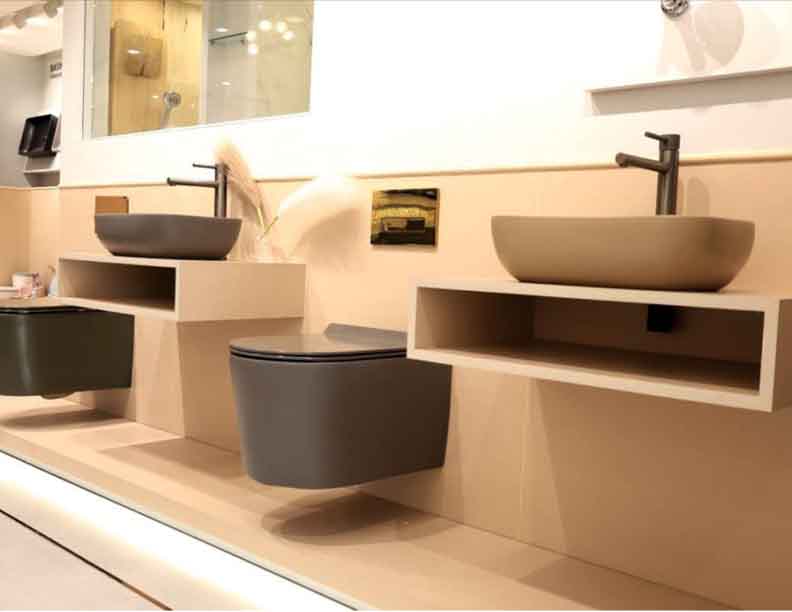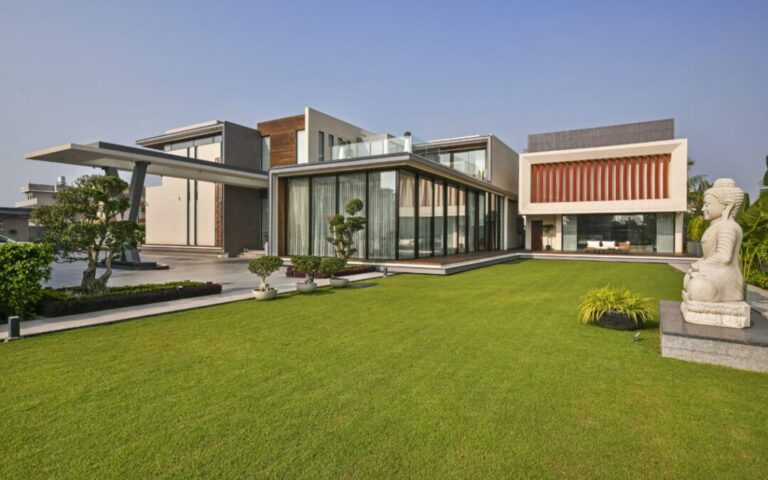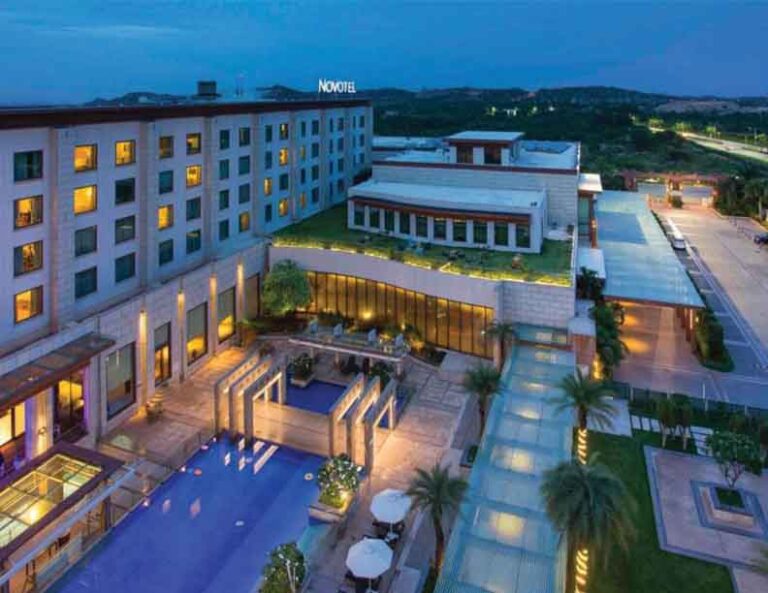Once regarded as purely functional spaces, bathrooms have undergone a dramatic transformation in recent years. From sterile white boxes tucked away in a home’s corner, they are now thoughtfully designed sanctuaries of comfort, luxury, and self-care.
his shift is driven by changing lifestyles, urban living patterns, and a growing emphasis on wellness. Interior architects and designers are responding by reimagining bathroom interiors as personalized retreats—where tiles, textures, and furnishings converge to form a cohesive, immersive experience. With rapid innovation in materials and a global push for sustainability and smart design, bathrooms have become a central focus in contemporary construction and interior architecture.
The Evolution of the Modern Bathroom
Modern bathrooms have several uses: they are places of personal retreat, centres for health and well-being, and displays of aesthetic taste. Space optimisation and aesthetic functionality have become more important as compact urban living becomes more common. In addition to meeting the specific durability, hygienic, and moisture-resistance requirements of bathrooms, designers are increasingly integrating materials and fixtures that have a high visual appeal.
Unlike in the past—when tiling was selected primarily for practicality—modern tile designs are key to setting the tone and mood of a bathroom. Paired with refined furniture concepts like floating vanities, modular storage, and designer mirrors, the result is a bathroom that seamlessly blends performance with personality.
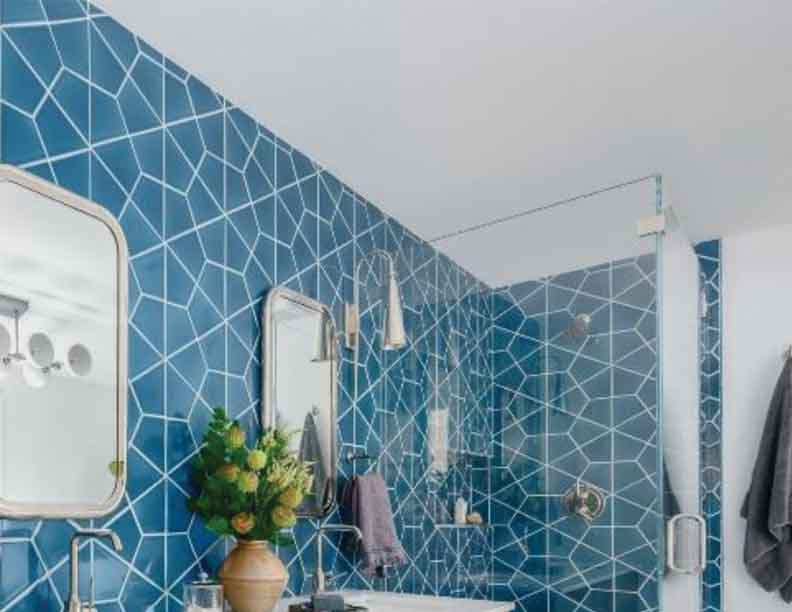
Tile Trends: A Symphony of Surface Innovation
Tiles remain the foundation of most bathroom designs. Their importance goes beyond color and pattern—tiles now act as textural canvases, with surface finishes ranging from ultra-matte and terrazzo to metallic-glazed or 3D-printed. The revival of artisanal, handmade tiles has also gained momentum, adding a tactile warmth and character to spaces that were once considered clinical.
Porcelain and ceramic tiles continue to dominate due to their affordability, ease of maintenance, and diverse design options. However, high-end interiors are seeing a rise in large-format tiles that mimic natural stone, concrete, or even fabric textures. These oversized tiles reduce grout lines, lending a sense of continuity and openness to smaller bathrooms.
The aesthetics of tiles have been greatly enhanced by digital printing technology. These days, tiles that closely resemble oxidised metal, reclaimed wood, Calacatta marble, or even woven textiles can be found for a fraction of the price and upkeep. This has given architects the freedom to create unique interior designs without being constrained by the availability of conventional materials or worries about their durability.
Sustainability will also be a key consideration in 2025. More and more environmentally conscious developers and homeowners are choosing tiles manufactured using low-emission manufacturing techniques or with recycled materials.
Color and Texture: Embracing Nature and Mood
Although many people still like minimalist bathrooms that are white and grey, there is a growing trend towards colour schemes inspired by nature. In keeping with the larger biophilic design trend, soft greens, sand beiges, ocean blues, and clay terracottas are becoming popular choices. These tones help create a grounded, spa-like atmosphere in addition to soothing the senses.
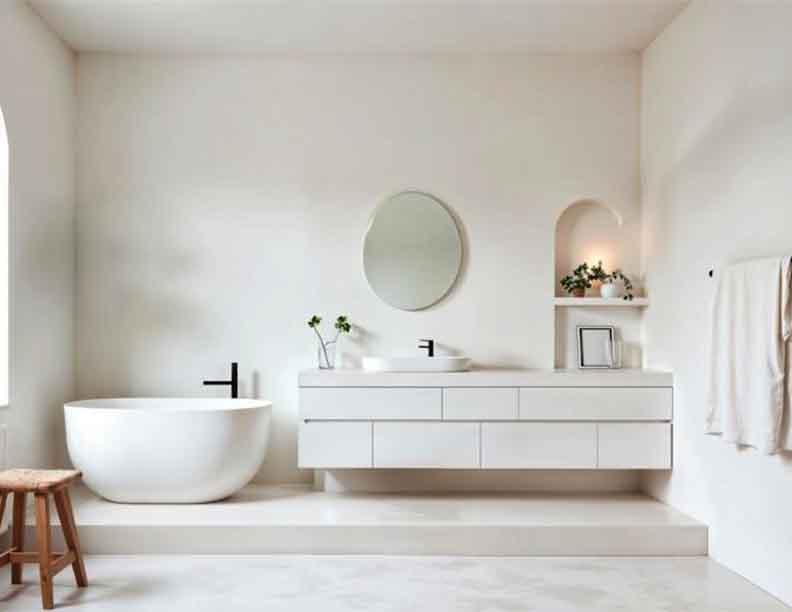
Another potent design element that is being boldly embraced is texture. Particularly in damp areas, matte and honed finishes offer improved traction and subtle luxury. However, because they add depth and reflect light, high-gloss tiles are still popular in accent areas like vanity backsplashes.
Designers are also exploring tactile contrast—pairing rough stone tiles with polished countertops or combining structured wall panels with soft-finish ceramic flooring. This interplay of textures can dramatically elevate the sensory richness of a bathroom, making it feel more curated and immersive.
Furniture: Form, Function, and Flexibility
Bathroom furniture is no longer an afterthought—it plays a central role in defining the layout, storage, and aesthetic of the space. The rise of modular bathroom furniture systems allows for flexibility in both residential and commercial applications. Floating vanities are particularly popular, lending a sense of openness while offering easy maintenance underneath.
In 2025, bathroom furniture is trending toward clean-lined, minimalist forms with hidden hardware, soft-close drawers, and integrated lighting. Wood and wood-look finishes are being reintroduced in waterproof, engineered formats, softening the coldness of ceramic surfaces. Oak, teak, and walnut tones are being paired with black or brushed gold hardware to create warm, modern environments.
For compact bathrooms, multifunctional furniture is key. Designers are integrating towel racks, laundry hampers, and lighting into vanity units to reduce clutter and enhance usability. Mirror cabinets with built-in defoggers and USB ports are becoming standard in mid-to-high-end homes, blurring the line between interior design and technology.
Wellness and Smart Technology Integration
Bathrooms are increasingly being equipped with elements that promote both mental and physical wellbeing as the wellness sector continues to have an impact on home design. Even small bathrooms are incorporating rainfall showers, aroma diffusers, chromotherapy lighting, and heated floors. Design priorities have changed from just looking good to feeling good thanks to this “home spa” approach.
The technology for smart bathrooms is developing quickly. In luxury developments, touchless faucets, voice-activated mirrors, occupancy sensors, and app-controlled lighting have become commonplace. While smart toilets provide automated flushing, seat heating, and bidet features, digital showers let users program temperature and flow preferences. In addition to improving comfort, these features encourage water efficiency and hygiene, two important aspects of both residential and commercial settings.
As AI and IoT continue to integrate into home automation, bathroom fixtures are increasingly being connected to central smart home systems, allowing for voice commands, usage analytics, and even preventative maintenance alerts.
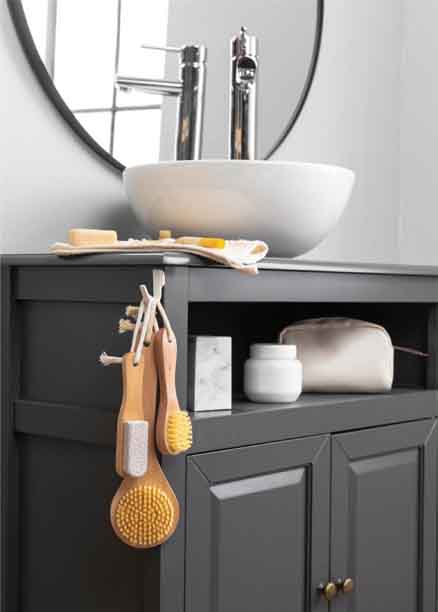
Sustainability in Focus
The design of bathrooms is being strongly impacted by the global movement towards environmental responsibility. Nowadays, dual-flush systems, aerated showerheads, and low-flow faucets are seen as necessities rather than extras. To satisfy the increasing demand for environmentally friendly construction, architects are requesting products with Environmental Product Declarations (EPDs) and low-VOC finishes in addition to energy-efficient lighting and ventilation systems. Choosing the right materials is essential to this endeavour. Low-impact composite countertops, FSC-certified wooden furniture, and recycled glass tiles are all growing in popularity among environmentally conscious customers. In large-scale residential and commercial projects, water-saving appliances and ceramics are also essential for obtaining green certifications.
Beyond products, the design philosophy is also evolving—emphasizing longevity, adaptability, and minimal waste. Modular components make furniture easier to update or repair, while neutral palettes ensure visual longevity that doesn’t go out of style quickly, reducing the need for frequent renovations.
The Future of Bathroom Design
As interior architecture continues to evolve, bathroom design stands at the confluence of aesthetic innovation, technological advancement, and environmental responsibility. In 2025, the bathroom is not just a space to wash or groom—it’s an environment that influences daily mood, promotes wellbeing, and speaks volumes about personal style.
Architects, designers, and product manufacturers are all rising to the challenge, offering solutions that cater to diverse needs—from luxury urban apartments to affordable housing. The growing availability of high-performance materials, paired with digital design tools and prefabricated modular systems, means bathroom customization is more accessible than ever.
Ultimately, the art of bathroom interiors lies in the ability to harmonize materials, textures, and functions in a way that reflects not only current trends but also the evolving aspirations of how we live.
Architecture nowadays is more about emotions and connecting people. The interior architecture industry is an ever evolving and fast-paced. Let us see a few latest developments from the industry.
Landmark Luxury bath and kitchen solutions at Studio Kohler in Hyderabad
Nestled in the vibrant heart of the city at Banjara Hills, Road no. 2, this highly anticipated space is set to become a hub of inspiration, blending art and innovation to redefine bathroom design and fittings in India. Studio Kohler offers an immersive sanctuary where architects, designers, and discerning consumers can discover exceptional products, engage in creative dialogue, and bring design visions to life.
The launch of Studio Kohler brought together esteemed architects, art curators, design enthusiasts, and lifestyle aficionados to witness the fusion of design and luxury through Kohler’s innovative products. The space also hosted an interactive zone where visitors can experience products and Kohler’s strong heritage of colours and finishes in a hands-on environment and visualize new possibilities in their bathroom design.
Ranjeet Oak, Managing Director, Kohler South Asia said, “We are excited to open the doors of this unique space that will allow our consumers to discover a wide range of cutting-edge bath space solutions which are tailored to their design sensibilities. We hope to inspire them and turn their aspirations into reality, offering a truly transformative experience.
The finest in bathware technology at Gravity Bath’s stores in New Delhi and Mumbai
Established with the mission to offer innovation, quality, and sustainability at the core of its offerings, Gravity Bath Pvt. Ltd. has grown into a trusted name in the sanitaryware and bath fittings industry. The new stores are direct extension of the brand’s philosophy—“Designed to bring joy to life’s moments.” It brings together the finest in bathware technology, design, and user-centric thinking under one roof, delivering not just individual products, but a holistic bathroom ecosystem.
Spread across an expansive layout, the Gravity Bath store in New Delhi & Mumbai is designed to immerse visitors in a comprehensive bathware experience. The space showcases the brand’s wide product portfolio—from premium faucets, showers, and sanitaryware to accessories, kitchen sinks, and kitchen faucets. Beyond the product display, the stores introduce mock-up bathrooms and live experience zones that allow customers to interact with the products in real-life settings. Specialized mock-ups include a vibrant and trendy Youth Bathroom, an indulgent Hotel Bathroom, an elegant Premium Home Bathroom, a safe and playful Kids Bathroom, a comfort-focused Senior Bathroom, and a Live Shower Area for water-flow demonstrations and product trials.
With two manufacturing units in NCR and Gujarat, Gravity Bath Pvt. Ltd. produces over 30 lakh faucets and more than 7 lakh sanitaryware pieces annually. Its product catalog spans more than 2,000 SKUs, distributed across a robust network of 12,500+ dealers and distributors nationwide. The company is recognized by leading industry bodies and is an approved vendor for Military Engineer Services (MES), further reinforcing its credibility and quality standards.
House of Rohl and 1508 London unveil render of WOW!house Principal Bathroom
House of Rohl returns to the spotlight at one of the most prestigious events on the international design calendar—WOW!house at Design Centre, Chelsea Harbour, running from 3 June to 3 July. Marking its fourth consecutive appearance, House of Rohl has partnered with the globally acclaimed interior and architectural design studio 1508 London to craft a captivating and thought-provoking Principal Bathroom. The installation draws inspiration from three core design philosophies: Reflection, Ritual, and Reverie.
Located in the heart of the Design Avenue, WOW!house spans an impressive 600 square metres, featuring 22 full-scale rooms and outdoor spaces, each meticulously curated by world-renowned designers in collaboration with leading global brands and exceptional suppliers. The bathroom concept by 1508 London reflects their internationally informed design ethos, positioning the bathroom as a tranquil retreat for personal ritual and renewal. The design beautifully marries ancient traditions with contemporary aesthetics, inviting visitors into a space that is both grounding and inspiring. Key products from House of Rohl’s portfolio include the sculptural Victoria + Albert Seros freestanding bath developed with renowned British sculptor, Sophie-Elizabeth Thompson, which embody the energy and movement of water. Brassware from Perrin & Rowe’s Langbourn collection have also been specified.
The strategic placement of brassware and carefully curated materials will create an interplay of light, reflection, and texture, fostering a unique and memorable experience. The design will also incorporate key pieces and bespoke elements from Artisans of Devizes, Bert Frank, Clayworks, Tom Faulkner, Charles Burnand, Porta Romana, Anka Bespoke, Atelier Alain Ellouz, Atelier 001, Novacastrin, Coral Stephens, Christy and Britannicus Stone. Commissioned artworks by Carl Koch of Paynes Grey have also been specified crafted from thousands of individually rolled, cut, dipped, and assembled ceramic tiles.
The rise of modular bathroom furniture systems allows for flexibility in both residential and commercial applications.



